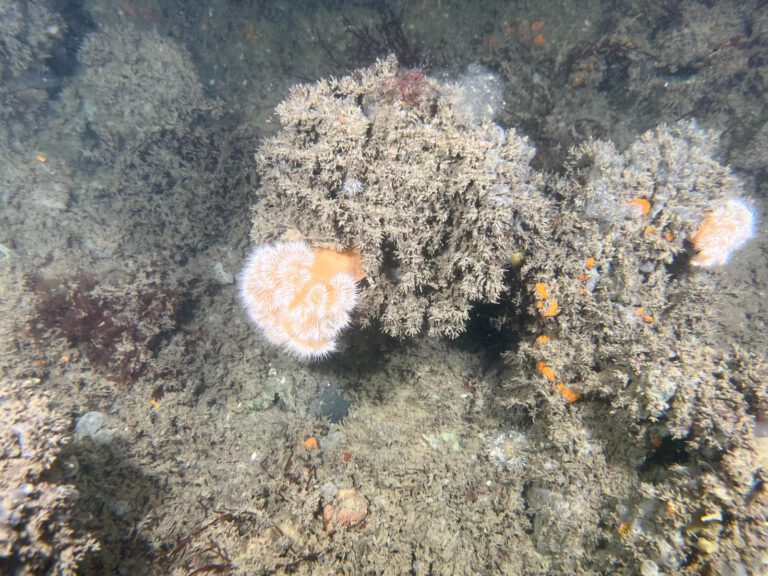Sea Lettuce (Ulva lactuca)

Seahorse (Hippocampus) - Zeepaardje
Taxonomy: Sea Lettuce belongs to the Ulvales order and is a type of green algae. Its bright green color makes it easy to identify.
Species: Ulva lactuca is the most common species of Sea Lettuce. It can grow up to 30 cm long and has a flat, leafy structure.
Reproduction: They reproduces both sexually and asexually. During sexual reproduction, it releases spores into the water, which can grow into new plants.
Habitat: Thrives in shallow coastal waters, particularly in rocky areas and tidal pools. It can often be found attached to rocks or floating freely.
Diet: As a photosynthetic organism. They produce their own food using sunlight. It also absorbs nutrients from the surrounding water.
Conservation: While it is not currently endangered, it can be affected by pollution and habitat degradation. Maintaining clean waters is essential for its growth.
Unique Anatomy: Has a unique, leaf-like structure that allows it to maximize sunlight absorption. Its thin and flexible leaves help it adapt to different water conditions.
Lifespan: Sea Lettuce has a relatively short lifespan, often living for a few months to a year, depending on environmental conditions.
Sea Lettuce: A Vital Component of Coastal Ecosystems
When you think about the ocean, you might picture colorful fish, coral reefs, and majestic sea turtles. Yet, the ocean is home to many vital organisms, including Sea Lettuce. This green algae plays a crucial role in coastal ecosystems.
What is Sea Lettuce?
Are known scientifically as Ulva lactuca, is a common green algae found in shallow coastal waters. Its vibrant green color and flat, leafy appearance make it a favorite among divers and beachgoers. It can be found clinging to rocks or floating freely in the water. This adaptable plant thrives in tidal pools and rocky areas, providing essential habitat for small marine creatures.
The Life of Sea Lettuce
It is an exceptional photosynthesizer. It absorbs sunlight to produce its own food and takes in nutrients from the water around it. This process is vital for maintaining healthy coastal ecosystems. Sea Lettuce contributes to the oxygen supply in the ocean, benefiting other marine life.
Unique Reproduction
It has a fascinating reproductive system. It can reproduce both sexually and asexually, ensuring its survival in various environments. When conditions are right, it releases spores into the water. These spores can grow into new Sea Lettuce plants, helping to maintain stable populations.
Ecological Role: A Habitat for Many
Sea Lettuce provides habitat and food for many small marine animals. Its presence supports the overall health of coastal ecosystems. By providing shelter and nutrients, Sea Lettuce helps sustain diverse marine life, making it a key player in the underwater world.
Conservation: Protecting Our Coasts
While it is not currently at risk, it faces threats from pollution and habitat loss. Keeping our oceans clean is vital for the growth and survival of Sea Lettuce and many other marine organisms. Conservation efforts are essential to protect these ecosystems and the life they support.
Conclusion
Sea Lettuce is a vital component of coastal ecosystems. Its unique characteristics, important role in oxygen production, and contribution to marine life make it a remarkable organism. As we explore the ocean, let us remember the importance of Sea Lettuce and work towards protecting our precious marine environments.







